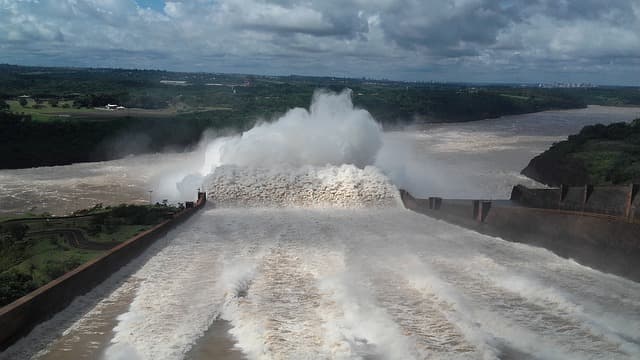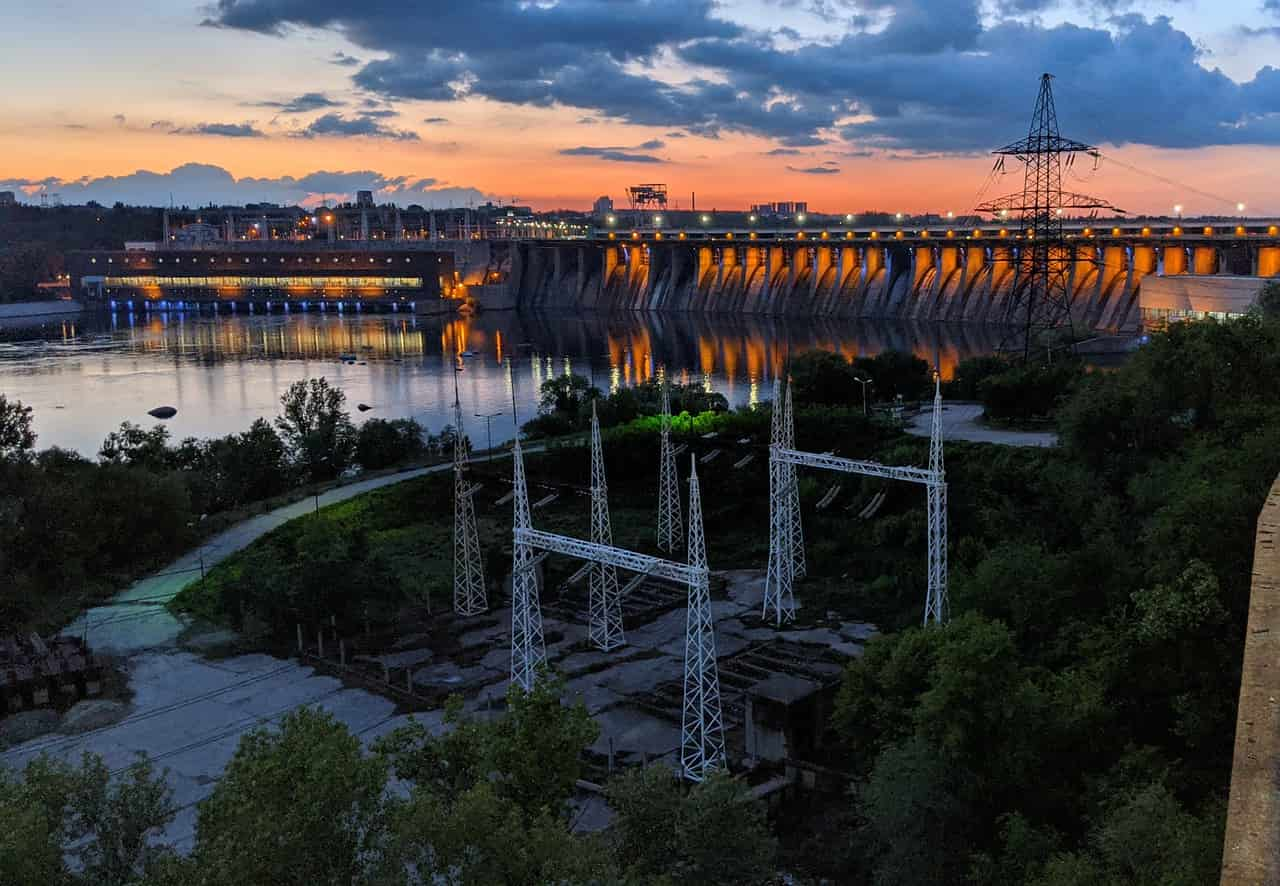Hydropower is one of the most widespread and affordable forms of electricity.
The total installed capacity of renewable energy facilities in the UK is growing at an extensive rate, with 6,055 MW in 2007, 9,535 MW in 2010 and 33,516 MW in 2016.
Water-stream power technology has a long history due to the comparative ease of access to sources and the near total absence of emissions that can have a negative impact on the environment.
Hydroelectric power plants use the energy of natural water current to generate electricity – a technology that can be used by both large and small businesses.
Depending on their power production capacity, hydroelectric power stations are divided into:
Large – plants with a capacity of 30 MW or more;
Small – stations with a capacity of 100 kW up to 30 MW;
Micro-hydro – stations with a capacity of up to 100 kW, used for supplying electricity to a house, farm or small village.
Large hydro power stations
Large hydroelectric plants are used to provide power to centralised and isolated power grids. In the US, for example, hydroelectric power plants currently operate in at least 34 states, with a combined capacity of more than 80,000 MW.
Hydropower dams
The most common type of hydroelectric power plant is a dam hydroelectric power plant. In this case, a dam is used to block the course of rivers and create a reservoir. When the water is released, it enters the blades of a hydro turbine, which drive generators that produce electricity. The water is released either to maintain the level in the reservoir or when there is a demand for electricity.
Pumped storage power plants
Hydroelectric power stations with dams can also be used to store electricity. During peaks of demand, such pumped storage plants operate on the principle of traditional hydroelectric power plants: the water is fed to the turbine blades, which begin to rotate. The mechanical energy is thus transferred to the hydroelectric generator, which generates electricity. However, during power dips, the plant uses cheap electricity from the grid; the turbine blades spin in the opposite direction and the water is pumped from the lower reservoir into the reservoir.
Derivative hydroelectric power plants
Derivative hydroelectric power stations are not designed to require a large dam (small dams are, however, sometimes still used). Here a portion of the water flow from a river is diverted into a drainage canal or pipe to drive a turbine.
Hydropower technologies have been heavily criticised on several occasions for altering the appearance of wildlife, impeding fish migration and degrading water quality and flow regimes. As a result, many scientists predict the decline of the industry by 2020. Many of these problems have already been solved by means of fish ladders, fish screens, newly designed turbines and regular aeration of reservoirs.
Micro-hydropower plants
Micro-hydropower plants are facilities with a capacity of less than 100 kW, used to generate mechanical power or electricity for farms, households and small villages.
All hydroelectric systems use the energy of water flow to produce electricity or mechanical power. Although there are several ways of using water resources to provide energy, micro hydroelectric power plants typically use so-called run-of-river systems, which do not require a large reservoir.
In such systems, part of the water flow is diverted into water supply structures – canals, pipes or pressure pipes – and fed to a turbine blade or water wheel. The flowing water turns the wheel or turbine, which transmits torque to the shaft. The motion can be used for mechanical processes such as pumping water or to drive a DC or AC generator to produce electricity.
Channel-type micro hydroelectric power plants consist of:
- A water supply structure – a canal, pipe or pressure conduit – through which water flows.
- A turbine, pump or water wheel that converts the energy of the water flow into rotational energy.
- A DC or AC generator that converts the rotational energy into electricity.
- The electrical wiring that supplies the electricity.
The design of many run-of-the-river hydro plants also often uses an inverter, to convert the low-voltage direct current produced by the system to 120 or 240 volt alternating current.
Commercially available turbines and generators are usually sold as a package. Homemade units require matching the power and speed of the turbine blades to the generator’s capabilities.
Whether the hydroelectric microgrid is connected to the grid or operates autonomously will determine the coherence of all its components. For example, some stand-alone systems use batteries to store the electricity produced. However, since the load of hydroelectric systems is highly seasonal, batteries may not be the most practical solution. The batteries used should be located as close as possible to the turbine because it is difficult to transmit low-voltage electricity over long distances.
Dams and other elements of derivation hydro systems are seldom used in hydroelectric micro-stations. They require additional costs and the skilled assistance of a civil engineer. In addition, dams complicate plant maintenance and increase the risk of damage to the environment.

